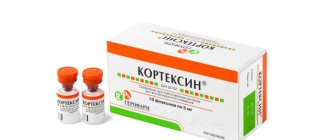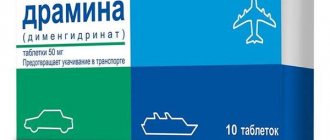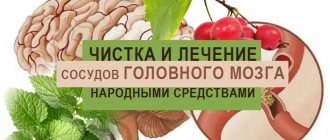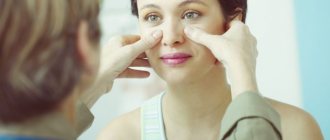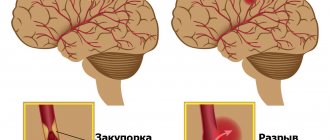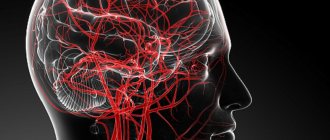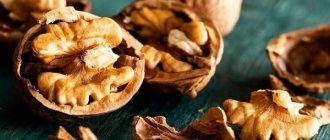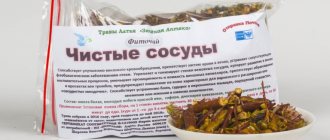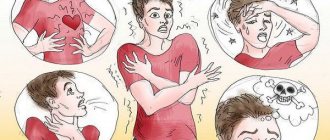Help and first actions of medical workers
Stroke is divided into two types:
- Hemorrhagic is a rupture of cerebral vessels, as a result of which blood begins to accumulate in the tissues, blood clots put pressure on the nerve endings, disrupting their functioning.
- The most common type is ischemic stroke, which is characterized by blockage of blood vessels in the brain, and the obstruction stops normal blood supply. Nutrients do not reach the nerve cells, which leads to the destruction of nerve endings.
Folk remedies for stroke can be very effective at the first signs of an impending illness. So, the first symptoms of a pre-stroke condition are:
- severe weakness in the lower or upper extremities (usually in the lower);
- confusion of thoughts, inability to formulate the simplest phrase, slurred speech;
- visual impairment;
- severe headache, migraine;
- frequent dizziness;
- ringing in the ears, feeling of a stuffy ear;
- violation of the sense of time and space;
- memory impairment.
All of the above symptoms of a stroke appear due to the fact that the brain no longer receives enough oxygen and nutrients. Immediate treatment can effectively cope with the serious consequences of a stroke suffered by a patient. Traditional methods of treatment have restorative effects and will help you overcome the disease faster and without serious complications.
In the first minutes after arriving at the location of a person suffering from a stroke, the ambulance team specialists assess the severity of the patient’s condition. Their main task is to transport the patient to a hospital equipped with an intensive care unit.
During transportation the following is carried out:
- Blood pressure measurements;
- Administration of drugs that correct the functioning of the cardiac and respiratory systems.
We do not transport patients who:
- They were found in a coma;
- If they have circulatory disorders in the brain in terminal conditions of various pathologies of internal organs or tumors.
Patients with such deviations are provided with symptomatic care, after which the call is transferred to the clinic.
Assistance in transporting a patient in an ambulance during a stroke
First of all, no attempt should be made to transport the patient to the hospital by private or public transport. In case of a stroke, a specially equipped ambulance is required, with qualified personnel, medications and a siren. Transportation is carried out to a specialized neurological hospital or to the intensive care unit of the nearest general hospital, where doctors have already been warned in advance.
As a rule, doctors have, at best, an hour and a half to provide care to a patient. Those who were close to the patient during the attack should accompany him to the hospital in order to tell the doctors in detail and constructively about the details of what happened and the first aid provided.
The following measures can be taken in the ambulance:
- Prevention of breathing disorders (if necessary - tracheal intubation, artificial ventilation).
- Smooth decrease in blood pressure.
- Maintaining water and electrolyte metabolism using saline droppers.
- Administration of anticonvulsants.
- When transporting a stroke patient, they are guided by the principle of “transporting with the least loss to the body.”
Anti-blockade remedies
Treatment of nocturia in women with drugs and folk remedies
Cerebroprotective activity has been recorded in 200 varieties of plants, which have a similar effect as many analgesics and vascular drugs.
The use of herbs in cases of impaired blood supply to the brain is due to their therapeutic effect:
- Rhodiola, pomegranate – protect nerve cells from destruction;
- garlic, Dioscorea Caucasica, arnica – cleanse vascular channels of cholesterol deposits;
- Leuzea rhizomes, sage - eliminate problems with memory and speech;
- blueberries, rowan - tone arterial walls;
- astragalus, eucommia - lower blood pressure.
Herbal treatment for stroke is not a full-fledged therapy, but it helps clear vascular channels, improve blood flow to the brain and increase the immune response. For these purposes, beekeeping products, beaver stream, plant fruits, conifer cones, decoctions and infusions of medicinal herbs are used.
The therapeutic effect appears with long-term systematic treatment. Alternative medicine should complement general therapy, so the use of herbal remedies should be agreed with a doctor.
The human body in the post-stroke phase can unexpectedly react to any plant. Therefore, taking natural medicines should begin with a tablespoon, this will allow the body to adapt and correctly perceive the remedy.
Pine cones
Cones are a unique gift from nature that accumulates a number of valuable compounds. Such medicinal elements include phytoncides, vitamins and tannins, which improve the resistance of brain cells to irritants. During the impact, neurons die due to disruption of tissue blood supply. Even after restoration of cerebral circulation, cells continue to be destroyed due to the action of a special enzyme. Elements present in the bud destroy this enzyme.
You can prepare a pine tincture for stroke or a decoction. To obtain a tincture after a stroke, pour 5 cones with a glass of alcohol and leave for 14 days. Take the medicine one teaspoon a day, adding the tincture to tea. To get a healing decoction, you need to boil 5 cones in half a liter of water. The solution is taken in quarter glasses three times a day.
Herbal collection
The use of herbs after a stroke helps restore lost functions. Plants cleanse arterial walls, lowering blood pressure. It is necessary to mix dried immortelle, St. John's wort, birch buds and chamomile. A tablespoon of the mixture is poured into 500 ml of boiling water and left for an hour. I take a glass of medicine a day before bed. To improve the taste, you can add natural honey.
Hawthorn
The plant is rich in beneficial compounds such as:
- quercetin – normalizes blood circulation in the brain, fights heart disease;
- quercitrin – increases vascular strength;
- hyperoside – enriches the blood with oxygen, improves myocardial contractility;
- Vitexin - dilates vascular channels.
You can prepare a decoction or tincture that will help prevent the blockade.
Citrus blend
At home, you can prepare a healthy mixture that promotes the evacuation of excess fluid and increases the body's defenses.
It is necessary to grind 2 oranges and 2 lemons in a meat grinder, add 2 tablespoons of natural honey to the pulp, mix. You need to take 2 teaspoons per day before meals. Therapeutic course is a month.
Lemon-cranberry mixture
This recipe for stroke cleanses the body of atherosclerotic formations, fatty deposits, is used in the treatment of atherosclerosis, stroke, heart attack, and restores vision.
To prepare the mixture, you need to chop 1 kg of cranberries, half a kilogram of lemons, and mix the ingredients with a liter of natural honey. The medicine is taken one tablespoon twice a day.
horse chestnut
The plant contains a high concentration of biologically active elements that strengthen arteries, fight inflammation in capillaries, and nourish brain structures.
These substances include flavonoids, escin, and ascorbic acid. To treat a stroke, you need to pour 500 ml of boiling water over 10 crushed fruits and leave for 7 days.
Pine tea
A folk remedy against stroke is stroke prevention. You can brew spruce or pine branches directly in the teapot. It is recommended to drink the tea drink as often as possible, adding a slice of lemon to it.
The infusion cleanses the vascular channels, normalizing blood pressure. The medicine can be used for 5 months.
Alternative medicine devices
Stroke and its treatment with folk remedies.
Good afternoon
After a short break, returning again to our mailing list, I propose today to examine the topic raised by the author of the following letter:
• Good afternoon. Please tell me what folk methods of non-traditional medicine can be used to treat my wife (67 years old), who suffered an ischemic stroke in April. Thanks for the consultation.
What is a stroke, and what types of strokes are there?
Stroke is an acute disorder of cerebral circulation that occurs suddenly. The term stroke itself comes from the Latin insulto - I gallop . I jump and occurs most often against the background of hypertension, atherosclerosis of cerebral vessels, as well as with aneurysms or other anomalies of cerebral vessels.
All strokes can be divided into 2 types - hemorrhagic
(hemorrhage in the brain under the membranes), and
ischemic
(thrombosis of cerebral vessels, ischemic softening of cerebral vessels, etc.).
Hemorrhagic stroke
Hemorrhagic stroke most often develops as a result of increased permeability of the vascular wall. Vasomotor disorders of the vascular wall are important here, which is facilitated by sharp increases and decreases in blood pressure. In the area of hemorrhage, a focus of red softening is formed and, in the final stage, a cyst and scar changes in brain tissue.
Hemorrhagic stroke can also be the result of rupture of aneurysms of the vessels of the base of the brain.
A stroke usually occurs suddenly and can lead to death within the first hours. It occurs most often after suffering anxiety and stressful conditions, usually in the evening or during the day. Sometimes so-called precursors of a stroke may be observed in the form of headache, dizziness, heaviness in the head.
When a stroke occurs, the patient suddenly falls, loses consciousness, and develops a coma. Breathing is hoarse, loud, pulse is tense, blood pressure is usually elevated, the face is purple or bluish-purple, and vomiting is often observed. An indifferent gaze, “floating” pendulum-like movements of the eyeballs, sometimes averting the eyes towards the lesion. Involuntary loss of urine and feces may occur.
On the side opposite to the lesion, paralysis of one or both limbs is detected, and facial asymmetry is revealed.
Ischemic stroke
ischemic stroke develops as a result of an acute disruption of blood flow to a certain area of the brain (so-called ischemic stroke or cerebral infarction).
For the development of ischemic stroke and softening of brain tissue, it is usually not necessary to completely stop blood flow, but to reduce it by at least 40-50 percent.
The development of this type of stroke is facilitated by pathological changes in the walls of the arteries, slowing of blood flow, low blood pressure and changes in the biochemical composition of the blood. As a result of ischemia of the brain tissue, a focus of gray softening is formed and subsequently a cyst and scar changes in the brain tissue are formed.
Ischemic stroke is observed mainly in elderly people. Precursors of the disease are often headaches, darkening of the eyes, confusion, disorientation in space and time. Ischemic stroke most often develops at night or in the morning, especially after previous mental stress. Loss of consciousness during an ischemic stroke is not as deep as during a hemorrhagic stroke. Its duration is also shorter.
With thrombosis of cerebral vessels, pallor of the skin and visible mucous membranes is noted, the pulse is weak, blood pressure is often reduced, breathing is shallow, and the temperature is normal. Focal symptoms depend on the size and location of the ischemic stroke. Paralysis and paresis of the limbs, both unilateral and bilateral, may occur; visual disturbances.
First aid measures
If you suspect a stroke, you should immediately call a doctor!
Before the doctor arrives, the patient must be placed comfortably on the bed, his clothes unbuttoned, and a flow of fresh air allowed. To prevent the patient from suffocating during bouts of vomiting, tilt your face to one side and lift it up. Ice packs or heating pads should be placed on the occipital and parietal area, and if it is not available, at least wet towels. Place heating pads or mustard plasters at your feet.
If the patient is able to swallow, it is necessary to give him sedatives and drugs, and if the patient is hypertensive, blood pressure lowering drugs (this must be done carefully, under the control of blood pressure, so as not to reduce it sharply). It is not recommended to transport a patient to a hospital without a doctor’s opinion.
Treatment of stroke.
As you know, nerve tissue does not recover and therefore treating stroke is an extremely difficult task. Providing correct first aid and urgent hospitalization is very important. The fact is that in the first hours after a stroke, damage to brain tissue can be minimized as much as possible by timely and correctly prescribed treatment.
Patients with acute cerebrovascular accidents must be provided with complete rest; special care should be taken when forced to transport the patient.
The diet of stroke patients should be predominantly dairy-vegetable. Do not give sour, spicy, salty foods (increases blood pressure). Drinking alcohol and smoking is strictly prohibited. For several weeks after a stroke, the patient must remain on strict bed rest.
Tea and coffee should be completely excluded from the diet (an exception can be made for green tea, which is given in moderation).
After the acute period, there follows a long and intense period of rehabilitation, when the lost functions are partially or completely restored.
When acute events are behind
,
Traditional medicine recommends the following remedies for the treatment of paralysis:
- Peony evasive (roots). 1 tsp. Grind dry roots and pour a glass of boiling water. Leave in a warm place for 1 hour, strain. Take 1 tbsp. l. 4-5 times a day.
- Alcohol tincture of the roots of peony evasive. 1 tsp. dry crushed roots, pour 300 ml of vodka and leave in a warm place for 7 days. Strain. Take 25 drops 3 times a day.
- Bay oil. Pour 30 g of bay leaf into a glass of vegetable oil and leave, shaking daily, in a warm place for 2 months. Strain and bring to a boil. Rub daily into paralyzed areas.
- Make an ointment: bay leaf - 6 parts, juniper needles (or fir, pine, spruce) - 1 part, butter - 12 parts. Rub into paralyzed areas 2 times a day.
- An alcoholic tincture of chilibukha or Echinopsia (medical name “echinopsia”) helps cure paralysis. 1 tbsp. l. pour the herbs into 0.5 liters of vodka and place in a warm place for 21 days, strain. Drink 30 drops 3 times a day.
- Green tea. Properly brewed green tea has a good effect on patients who have suffered a stroke. Monitor your blood pressure when drinking green tea!
- Rosehip cinnamon (roots, fruits). Externally, a decoction of the roots is used for baths for paralysis and paresis. Baths are done every other day. The course of treatment is 20-30 baths. Water temperature 37-38°C.
- It is useful to rub any volatile ointment into paralyzed limbs several times a day (you can mix one part of alcohol with two parts of vegetable oil). Ether is often used for this purpose, but when using it, you must remember that ether is highly flammable.
- White step (paralysis grass). 1 tbsp. l. crushed roots pour 300 ml of vodka. Infuse in a warm place for 7 days, strain. Take 25 drops in the morning and evening with water after meals.
- Cut 2 medium-sized lemons and 2 oranges into pieces, remove the seeds and pass through a meat grinder. Mix the resulting mass with 2 tbsp. l. honey Keep in a glass jar for one day at room temperature, then put in the refrigerator. Take 1 tbsp. l. 2-3 times a day with tea.
- 1 tbsp. l. Brew crushed celandine with 1 cup of boiling water for 15 minutes, strain, take 2 tbsp. l. 3 times a day before meals. The course of treatment is 2-3 weeks.
- Peel half a lemon, chop, pour 1 cup of pine needles (1 tablespoon of pine needles, pour a glass of boiling water, leave for 1 hour, strain) and take on an empty stomach (1 hour before meals or an hour after meals for 2-3 months ).
- Sage works well for stroke patients. Combine ingestion of sage infusion (1 tablespoon per glass of boiling water, leave for 1 hour) with general sage baths (300 g of sage per 10 liters of water). First, cold water is poured into the bath, then hot water, then a sage decoction is added.
- Mix 100 g of chamomile flowers, St. John's wort, caraway seeds and birch buds. 1 tbsp. l. pour a glass of boiling water over the mixture, add another 300 ml of water, and bring to a boil. Drink warm with 1 tsp. 1 glass of honey in the morning 20 minutes before meals and in the evening at 21 o'clock. After taking the medicine, do not eat or drink anything. Drink daily until the mixture runs out. Repeat treatment after 6 months and after a year.
- For stroke lesions of the brain: take 5 mature pine cones (with seeds), wash with running water, add 200 ml of 70 percent alcohol, leave for 2 weeks in a cool place. Take 1 tsp. in a glass of weak tea once a day after meals. For those who cannot tolerate alcohol: pour 5 mature pine cones into 0.5 liters of water, bring to a boil and simmer over low heat for 5-7 minutes. Take 1/4 cup after meals, you can add honey to taste.
However, any therapy for stroke must be agreed upon with the attending physician!Prevention and rehabilitation:
After a stroke, the patient needs to be careful. Mental fatigue and nervous strain should not be allowed. Alcohol, coffee, tea, smoking should be completely excluded. If possible, reduce your consumption of oil, meat, and sugar.
Based on the foregoing, it becomes clear that a stroke is easier to prevent than to cure, therefore, stroke prevention is the most important task, which mainly comes down to the prevention and treatment of conditions that cause stroke - atherosclerosis . hypertension . parasitic infestations leading to blockage of blood vessels and weakening of the vascular wall.
For example, it is possible to localize roundworms in the patient’s brain ( “Ascariasis and dracunculiasis . “Human roundworm” ), the larvae of many helminths, for example wuchereriosis . may, during their migration, cause blockage of blood vessels.
Restoring everyday skills
Treatment of cerebral atherosclerosis with folk remedies
After a stroke, many patients lose basic skills - they cannot eat or undress. A number of exercises will help you regain lost functions:
- Food. The assistant directs the movements of the affected hand to take food from the plate and bring it to the mouth.
- Opening the tap. It is better to sit the patient on a chair. An assistant guides the paralyzed or weakened arm to start the water. In this case, the healthy one is used to check the temperature.
- Washing. The assistant moves the paralyzed hand to the healthy one, helps to take a sponge and wet it.
- Combing. The patient sits, tries to take a comb and comb his hair. It is advisable to make some movements with the affected hand. A second person helps him maintain his balance.
- Putting on a blouse, T-shirt. The victim sits, slightly bent, puts his clothes on his knees, presses his paralyzed arm between his legs, and places his sleeve there. An assistant helps put the injured arm into the sleeve up to the elbow, then puts the healthy arm into the second sleeve and puts the T-shirt on the body.
Types of stroke
What ointments can be used to treat hemorrhoids during pregnancy? review of 12 safe drugs
There is an extensive classification of strokes according to location, volume of damaged parts of the brain, and the mechanism of development of the disease. There are the following types of this disease due to the causes of occurrence:
- Ischemic. It occurs most often and occurs due to blockage of a vessel, resulting in impaired blood circulation in a separate area of the brain.
- Hemorrhagic intracerebral. Occurs as a result of hemorrhage
- Subarachnoid hemorrhage due to vascular rupture
- Transient ischemic attack. This is a temporary blockage of a vessel, in some cases the patient does not realize that a mini-stroke has occurred
According to localization, the following types of disease occur:
- Extensive
- Lacunar
- Spinal
What not to do if you have sunburn
Complications from sunburn often occur due to improper treatment. So that they pass without consequences:
- do not apply ice to burned areas, do not take a cold shower - a sharp temperature change will accelerate the development of the inflammatory process;
- do not puncture blisters with a needle or other sharp objects - this increases the risk of infection;
- do not wipe the skin with alcohol-containing solutions - it needs to be moisturized, and alcohol dries it out, which will increase peeling;
- do not lubricate burned areas with olive, sunflower or other vegetable oils - they form a greasy film, which interferes with normal air exchange and natural cooling;
- if blisters appear, there are wounds, acne - do not apply fermented milk products;
- Do not use hard washcloths or peelings to speed up exfoliation, as you may injure the skin.
At this time, you need to soften it, moisturize it and protect it from ultraviolet radiation with sunscreen or thick clothing, do not use scrubs, hard washcloths, do not visit the sauna or take hot baths.
Hydrogen peroxide for stroke
For stroke, treatment with folk remedies is carried out in different ways, one of which is the use of hydrogen peroxide. The product rarely causes adverse reactions and has almost no contraindications: the only situation when it is undesirable to use it is individual intolerance.
It is believed that timely injection of peroxide into the blood helps to avoid negative consequences. However, this method is not used in traditional medicine.
| According to experts, this remedy has virtually no contraindications. Its use is impossible only in case of individual intolerance. Hydrogen peroxide can be used to treat many diseases, including stroke. Its beneficial properties in this case are determined by its ability to regulate metabolic processes in the body. Intravenous hydrogen peroxide is not used in traditional medicine. However, based on the results of clinical studies, it was found that if you manage to get an injection in time for a stroke, you can avoid many serious consequences. Hydrogen peroxide solution is used as a mouth rinse. Regularly performing this procedure can prevent strokes. In addition, rinsing is not only the prevention of serious illness, but also a way to cleanse the mouth of food debris. You will need hydrogen peroxide with a concentration of 3%, which should be diluted in water. The ratio is 1:1. You can rinse your mouth with this solution for a minute. |
How to help a person with a stroke
If signs of acute cerebrovascular accident are detected, emergency assistance must be called as soon as possible!
The procedure for providing assistance before the ambulance arrives:
- reassure the victim so as not to aggravate the situation with excitement;
- put the patient on the bed, raise his head 30 degrees; if consciousness is lost, turn your head to the side (vomiting is possible), stretch out your tongue;
- loosen clothes - collar, belt; ensure air flow;
- measure blood pressure and, if it is elevated, give medications to lower it;
- Place your feet in a bowl of hot water or place a heating pad on your feet to help drain blood from the brain.
Prohibited:
- Give the patient vasodilators until the ambulance arrives.
- Give water or food to the patient.
A special case is when a stroke occurs in a car and the victim is driving. Here, not only his life, but also the lives of passengers may be at risk. In this case, you need to stop, call an ambulance, and open all the windows.
I follow the recommendations of the doctor - O.I. Shishova
Now my daily rule is what is written below...
—
namely:
Lymphatic self-massage
1. LYMPHATIC SELF-MASSAGE. For any feeling that the head is not right, that it is not thinking well, dizziness, headache, migraine... In the first stages, you need to do lymphatic self-massage to remove mechanical compression by the lymph nodes and the speed of blood flow to the brain.
It is necessary to activate the process of blood inflow and outflow into the brain using lymphatic self-massage, namely:
- — elimination of congestion in the left clavicular area
- — elimination of congestion in the right clavicular area
- - elimination of congestion in the left cervical area
- - elimination of congestion in the right cervical area
- - elimination of congestion in the cervical lymph nodes
- - elimination of congestion in the nasolabial lymph nodes
- - elimination of congestion in the occipital lymph nodes
- - eliminating congestion in the lymph nodes of the head
Diaphragmatic breathing
2. DIAPHRAGM BREATHING during the day, without raising your shoulders, on voluntary breathing, which allows you to PRACTICE eliminating congestion in the area of the abdominal aorta and vein and establish blood flow both in the head and in the upper and lower extremities. At the same time, remove the mechanical stagnation of bile in the duct. Until the duct opens in exactly this place, we will have a stagnant gallbladder, and this is already a gastrointestinal tract disease.
Any RETRACTION OF THE ABDOMEN causes a change in the state of blood circulation in the duodenum and bile is mechanically pushed out.
Bends forward before each meal helps to mechanically push the bile out of the duct into the duodenum. This promotes better digestion of food in the stomach and intestines.
Eliminating lymph stagnation
3. ELIMINATING LYMPH STAGNATION by raising your arms after eating for 3 - 5 minutes - what this gives: - a stomach full of food goes down and stops putting pressure on the heart and lungs. The lymph stops taking everything from the tank to the collarbone - stopping the outflow from the face... - the lymph leaves - the neck stretches - and the stomach stops putting pressure on the heart and lungs...
Rubbing the body before and during bathing
4. RUSHING THE BODY BEFORE BATHING AND DURING BATHING along the lymphatic lines and ducts, which allows us to - ACTIVATE THOUSANDS OF LYMPH NODES throughout the body. If the lymph node begins to be actively supplied with blood, it GIVES ACTIVE IMMUNE CELLS.
We begin rubbing in exactly this order, with:
- - subclavian zone
- - cervical area
- - facial zone
- - heads
- - active rubbing under the armpits, this is the prevention of mastopathy... starting from the collarbone
- - hands, pulling the lymph from bottom to top
- - rub the inguinal lymph nodes
- - legs, starting from the top, pulling the lymph to the groin
- - rub from the sides and stomach into the armpits
I use Vivaton for problem areas for pain
I drink clean water every morning on an empty stomach to cleanse the gastrointestinal tract. I have the habit of starting the morning with a morning toilet - hygiene of the body, oral cavity, etc., as well as brisk walking in the fresh air.
I learned a lot useful for healing my body from video lectures by Professor Ivan Pavlovich Neumyvakin.
Cured with folk remedies
I coped with serious illnesses on my own; the doctors could not help me. After abdominal surgery, serious problems began with, early menopause began, plus everything was suffocating from swelling in the nose, I was simply dying from intoxication, pain, hypersweating, suffocation. I thought it was the end for me.
But GOOD NEWS HEALTHY LIFE did not give death a chance. This is simply amazing, I bought the Healthy Lifestyle Bulletin and immediately opened the page where my problem was described.
Nasal swelling is treated quite simply - tar + milk, but I suffered for more than 30 years, and miraculously avoided surgery.
With the intestines, I also quickly found a way to relieve it - wheat bran + flax seed. A healthy lifestyle helped me cope with serious illnesses and enjoy life.
I want to tell you about these surprisingly simple, but very effective and useful natural remedies:
- — HOP CONES (contain female sex hormones) — against menopause
- — BIRCH TAR + MILK — from the nose
- — DRIED CARROTS — against kidney stones
- — DILL SEED —
- — SUNFLOWER SEEDS —
- - FLAX SEED -
- - GARLIC - , ,
- - WHEAT BRAN -
- — ITCHING OF BODY SKIN — rashes on the skin — laundry soap
- - - moles, warts, eyelids, sores...
A large orchard makes me work a lot physically, but it gives me joy and inspiration.
Now I follow my daily routine and take measures to improve my body’s health.
Preventing sunburn
look beautiful and avoid burns , you need to dose your exposure to the sun. The best time for sunbathing is before 10-11 am and after 16-17 o'clock. Try not to go out in the sun between 11 a.m. and 4 p.m. To protect your face and body from direct sunlight, wear wide-brimmed hats, a cap with a visor, or other headwear. Don't forget about eye protection - sunglasses will help preserve your vision and slow down the formation of wrinkles in the corners of your eyes.
On hot days, dress in loose, light-colored clothing made from natural fabrics. It reflects ultraviolet rays well and does not interfere with air exchange. If you have delicate, fair skin that is prone to sunburn, be sure to cover your shoulders and back, choose dresses, shirts, and T-shirts with long sleeves.
Drink more clean water and tea, but give up sweet carbonated drinks and coffee. They have a diuretic effect and accelerate moisture loss. And the body needs it to secrete sweat and naturally cool the skin.
Regularly apply sunscreen to exposed areas of your body, even if you only need to walk outside briefly on a sunny day. On the beach, renew it every 2 hours and after swimming.
How to treat a cough with onions
Onions were used as a cure for colds and respiratory inflammation in ancient Rome. Every day, gladiators were given a head of garlic and onion to boost immunity and get rid of weakness and ailments.
Cough onions for adults are used in the following effective recipes:
0.5 kg of onion is peeled and chopped using a meat grinder. About 150 ml of honey is poured into the resulting mixture. 0.5 kg of sugar is stirred in a liter of warm water. This syrup is slowly poured into the first mixture
After thorough mixing, put the pan on the fire, cook the jam for 2.5-3 hours, it is important to stir the product regularly so that it does not burn. The mixture can be stored for no more than a week in the refrigerator.
You need to take a teaspoon of homemade medicine 5-7 times a day: two grated onions are mixed with two tablespoons of goose fat. The mixture is applied to the chest area for a week. After the first two procedures, the cough will become mucus. The best results can be achieved by drinking raspberry tea or taking herbal decoctions.
You can always buy tablets at a pharmacy, but only a therapist should prescribe them. After diagnosis, the doctor will be able to determine the type of disease that will be appropriate for a specific treatment. Traditional methods are effective if the disease is not advanced.
How else can you treat a cough at home? There are several effective recipes that can relieve the tearing bronchospasm and antipathy.
Fir cones
These ingredients are also beneficial for stroke. Fir cones perfectly purify the air, so they are suitable for storage in domestic conditions. They have antispasmodic and antimicrobial effects, so their products are effective against colds and infections.
First recipe
Fir cones are finely chopped, poured into a three-liter jar, and filled with chilled water after boiling. The resulting mixture is left in a room without light for fermentation. After 10 days, the tincture is filtered. After cleaning, add apple cider vinegar to the liquid.
Second recipe
The tincture of fir cones is made according to a different recipe. Apple cider vinegar is used to prepare it. The cones crumble finely and are filled with water. Wait for the mixture to ferment, after 10 days the tincture is filtered, the plant is filled with fresh water.
Cured with a folk remedy from a healthy lifestyle
I myself was suffocating for many years, I read the recipe in a healthy lifestyle, applied it and got rid of the swelling of the mucous membrane in the nose, but the doctors prescribed surgery, it is not clear why.
I can’t express my joy in words, I’m breathing freely without drugs or drops, isn’t this a Miracle. Now I often use recipes from a healthy lifestyle; it’s good that people share about their healing.
Now, studying the positive reviews from the publications of the Healthy Lifestyle Bulletin, I try to save the most necessary and popular recipes on the blog...
When I read the “Healthy Lifestyle Bulletin” I am simply amazed at how many sick people find traditional treatment recipes for themselves and, using them, are healed.
Such joy for everyone who helped themselves to heal with simple, accessible folk remedies, often growing under our feet, in fields, meadows, forests and more...
In order to avoid a serious illness from congestion in the body, it is important to know about the law of nature of the human body, to eat correctly, eat properly, and not only that...
Without cleansing the body, without restoring the acid-base balance of the body, it is impossible to recover from any disease.
By the way, I want to say about hypertension, it so happened that my mother, an experienced hypertensive patient, was not helped by medications to bring down her high blood pressure, it went off scale over 200, but a very simple recipe helped - dill seed. And what’s interesting is that dill seed has a very beneficial effect on the entire body.
I would like to select the most useful folk remedies and mark them separately so that I can quickly find and use them.
Signs of skin burning in the sun
To prevent deep burns while in the sun , you need to periodically check for signs of burning. The first symptom is redness of the skin . Pain and other unpleasant sensations may not be felt. They appear later.
It is necessary to determine the degree of damage to the skin. If there is redness, mild pain, but no blisters, you need to provide first aid and the redness will go away in a few days. The skin may begin to peel. This is not dangerous, but the risk of repeated, more severe burns increases when exposed to the sun.
If blisters appear, you need to consult a doctor and treat with anti-burn ointments, drugs that relieve inflammation and prevent infection. Treatment is carried out under the supervision of a doctor. Patients often develop fever, swelling, headaches, weakness, and palpitations.
Shortness of breath and its treatment with folk remedies
Honey and lemon. Take 1 kg of honey, 10 lemons (squeeze juice) and 10 heads of garlic (grind into pulp). Mix all this thoroughly and place in a closed jar in the refrigerator for a week. Take four teaspoons daily
It is important not to miss a single day (the course of treatment is two months). This is an effective remedy for people of any age
Melissa. Melissa is good for treating shortness of breath. Infuse 2 tablespoons of the herb in a glass of boiling water for about 10 minutes, then strain. Drink the infusion three times a day (drink the entire prepared infusion during the day). You can also add lemon balm leaves to the teapot when brewing tea.
Treatment with folk remedies
It was mentioned above that it is impossible to be cured using traditional methods, but you can help yourself during the onset of illness. Relieve symptoms and speed up recovery.
This is where foods and herbs come to the rescue, acting as antipyretics, relieving sore throats and coughs, and also helping with a runny nose.
Herbalists note that the advantage of plants is that they have virtually no contraindications.
For example, the following herbs have anti-inflammatory and antiviral properties:
- Lobaznik (common and elm-leaved);
- Spiraea;
- Oak bark;
- Willow bark;
- Oregano;
- Thyme;
- Yarrow;
- Echinacea;
- Sage;
- The spirea plant has proven to be very effective in the fight against viruses;
- Needles.
Based on herbs, healing teas, infusions and decoctions are made.
- Infusion of spruce or pine buds. Brew 10 grams of crushed kidneys with one glass of boiling water. Leave for 4 hours and strain. Take 1 tablespoon every 2-3 hours. Excellent for colds and lung diseases.
- A decoction of oak bark for sore throats, which has a disinfecting, decongestant and anti-inflammatory effect. Brew 3 tablespoons of oak bark in 200 ml of water. Place the container with the herbs in a water bath for 30 minutes. Let the broth cool, strain and add boiled water to make 300 ml of broth. Gargle with this liquid as often as possible.
- Yarrow infusion at high temperature: pour 1 teaspoon of yarrow herb with a glass of boiling water. Let it brew for several hours. Drink this glass 4-5 times a day. It enhances sweating well.
Medicines (tablets, injections)
Medicines play the first role in rehabilitation. They help in eliminating brain dysfunction. Medicines are prescribed only by the attending physician. Self-selection is extremely life-threatening and can lead to another stroke.
During treatment with pharmacotherapy in the rehabilitation of patients with stroke, the tablets must be taken in a course, then a break is taken. The main categories of drugs include the following:
- Nootropics are medications that affect the mental functions of the brain. Improve memory, stimulate mental activity. Among them: “Piracetam”, “Noofen”, “Lucetam”.
- Medicines that improve blood flow to the brain: Cavinton, Pentoxifyline, Cerebrosilin, tablets made from aspirin.
- Drugs that improve metabolism in brain cells: Cortexin, Ceraxon, Actovegin.
- Combination drugs - these substances consist of several drugs. They are easy to use. Tablets include: Phezam, Thiocetam.
Doctors can also prescribe drugs of other categories that improve the general condition of the patient. Among the leading drugs is Glycine, a substance that reduces the excitability of the nervous system. Sirdalud, a drug that eliminates muscle tension and muscle spasms, is also often prescribed. Antidepressants are also popular in recovery practice.
With drug therapy, the recovery algorithm is strictly followed. First, all drugs are administered intravenously. When the patient is able to take medications on his own, he will be able to take ordinary pills. If any drugs are not suitable for the patient, the attending physician replaces them with others.
It is recommended to undergo treatment with cerebroprotectors twice a year. These drugs improve blood circulation and normalize brain activity. The drugs are administered only intravenously.
Prevention of strokes and cerebral infarctions
Bee venom apitoxins are a multicomponent active substance that can perform a number of tasks in the prevention of cerebral strokes:
- Firstly: it stabilizes blood pressure due to melittin, apamin, phospholipase A.
- Secondly: it has a therapeutic effect on the myocardium by improving blood flow in the myocardium, improving the nutrition of the heart muscle, and normalizing the heart rhythm.
- Thirdly: it reduces cholesterol levels in the blood, gradually breaking down atherosclerotic plaques in the vessels.
- Fourth: the bee venom peptide melittin normalizes heart rhythm by influencing the contractility of myocardial cells.
- Fifthly: the general effect of apitoxins in the form of normalization of metabolic processes, regulation of the functioning of major organs and systems.
Other drugs for stroke treatment
stroke
Infusion of blue iodine
In addition to the usual 5% iodine, you will need water and starch to prepare the infusion. A teaspoon of starch is diluted in a small amount of water, after which the resulting solution is slowly poured into boiling water (200 ml). The mixture is cooked with constant stirring until it thickens, after which it is set aside to cool to 30°C. Add a teaspoon of iodine to the cooled solution and mix thoroughly. The medication should be taken every morning no earlier than half an hour after breakfast. The initial dosage of the infusion is 4 tsp. Over the next 4 days, it increases daily by a teaspoon. After 5 days of treatment, you need to take a break for 5 days, after which you need to take the medicine again for the same period. For treatment to be effective, it is necessary to complete 3 courses.
Mumiyo
Natural resin, consisting of a complex of minerals, chemical elements, essential oils, amino acids and vitamins, helps restore brain cells damaged by stroke. Raw materials for the preparation of medicinal substances are sold in pharmacies. 5 g of resin is dissolved in 150 g of pre-squeezed aloe juice. The resulting medicine is taken in the morning and evening on an empty stomach, one teaspoon at a time. Treatment consists of 2 courses of 10 days each, with a 4-day break between them.
Ointment with bay leaf
Medium-sized bay leaves (6 pcs.) must be crushed into fine powder and mixed with baby cream (80 ml). The resulting ointment should be rubbed into the skin of the face with massaging movements at night in case of hypertonicity of the facial muscles.
Is something bothering you? Illness or life situation?
Describe your problem to us, or share your life experience in treating the disease, or ask for advice! Tell us about yourself right here on the site. Your problem will not go unnoticed, and your experience will help someone!
To effectively eliminate the consequences of a stroke, an integrated approach is required, in which folk remedies occupy a significant place. The only condition in such cases is the inadmissibility of self-medication and taking a seemingly useful remedy only after agreement with the doctor.
